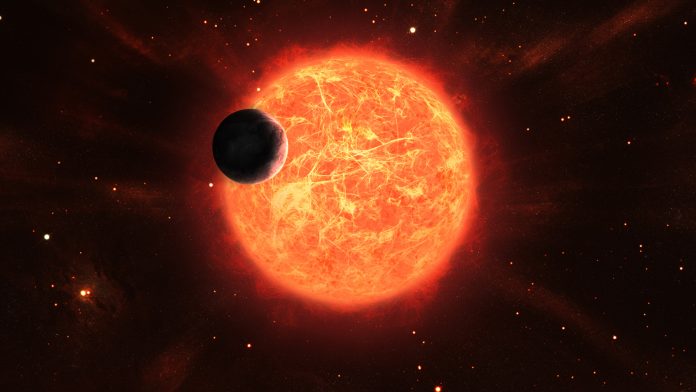An international team of researchers has found that red giant stars often experience glitches deep inside their inner core.
Astronomers have used data from NASA’s Kepler space telescope, to reveal that red giant stars, dying stars that have depleted their hydrogen supply and are in the final stages of stellar evolution, often experience large-scale structural variations, or glitches, deep inside their inner core.
The study, ‘Evidence of structural discontinuities in the inner core of red giant stars,’ published in the journal Nature Communications, is the first to perform detailed observational characterisations on the deepest layers of red giant stars.
Variations in red giant stars
The common type of stellar glitch relates to a red giant star’s rotation, but lead author of the study, Mathieu Vrard, examines a different type of defect. The glitches analysed in this study can affect a star’s oscillations or the frequencies and paths that sound waves travel when passing through a star.
Red giant stars are helium-core burning objects which are frequently used as probes of distance to measure facts such as galaxy density, and for astronomers to find out more about the physical process behind stellar chemical evolution. Therefore, according to Vrard, a postdoctoral research associate in astronomy at Ohio State University, it is crucial that scientists understand why these discontinuities happen.
“By analysing these variations, we can use them to obtain not only the global parameters of the star, but also information on the precise structure of those objects,” he said.

The team selected a sample of 359 red giant stars that were below a specific stellar mass and measured their various properties and frequencies, to establish whether these glitches were becoming more prevalent across certain star groups.
The team discovered proof that 24 of the red giants surveyed had experienced intermittent structural discontinuities at one point or another during their lifetime. Although this figure does not seem significant, equating to 7% of those in the sample, if applied to all of the known stars in our Universe, the number of stars that have these irregularities would be enormous.
Theorising how the glitches work
There are two predominant theories that explain how these disturbances could work. The first theory argues that glitches are present throughout the star’s evolution but are generally very weak and below the threshold for what is categorised as a true discontinuity.
The second scenario proposed that irregularities are smoothed out by an unknown physical process that later leads to changes in the structure of the star’s core.
The first theory is not supported by this study’s model, which argues that glitches are a common occurrence, but more precise data is needed before scientists can confidently endorse the second.
“What we think is that the second theory might hold up better because the first one didn’t make sense with our observations,” Vrard said.
Using the study to advance astronomy
As the study offers a better characterisation of the physical processes taking place inside red giant stars, the work could have large implications for the fields of asteroseismology and galactic archaeology. The team aims to further build on the scientific community’s knowledge of red giant stars by examining more precise data that could help cultivate even more refined stellar models.
This work received support from NASA as well as the European Regional Development Fund.









